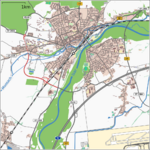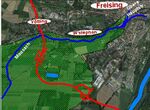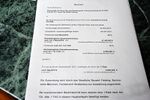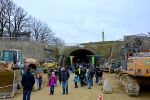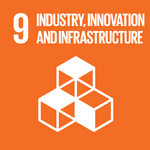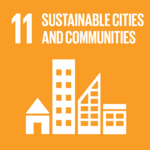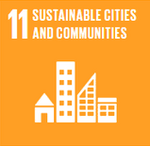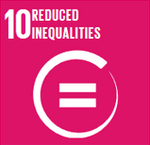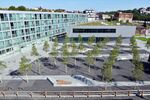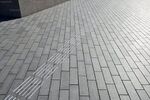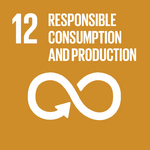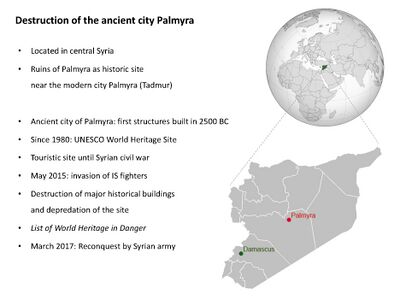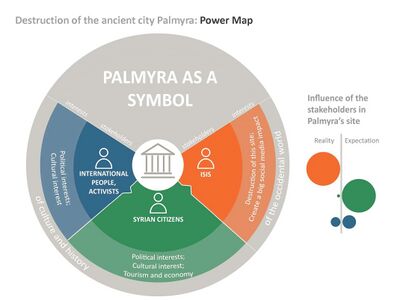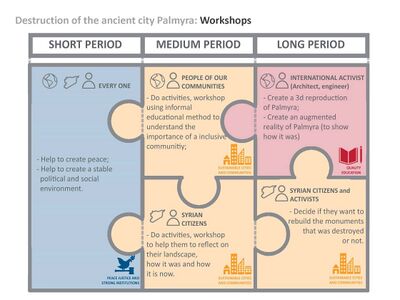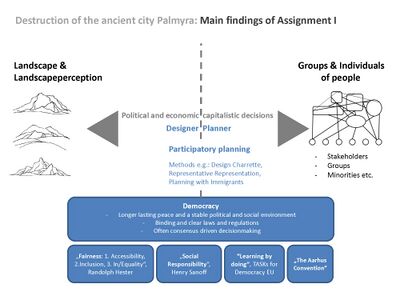LED Online Seminar 2018 - Working Group 11: Difference between revisions
| (38 intermediate revisions by 4 users not shown) | |||
| Line 21: | Line 21: | ||
File:Kia manifest.jpeg|Seyyed's manifesto | File:Kia manifest.jpeg|Seyyed's manifesto | ||
File:Manifesto Landscape Democracy.jpg|Giulia Martina's manifesto | File:Manifesto Landscape Democracy.jpg|Giulia Martina's manifesto | ||
File: LED-1.jpg |Markus Herrmann's Manifesto | |||
</gallery> | </gallery> | ||
| Line 105: | Line 106: | ||
=== Step 5: Reflection === | === Step 5: Reflection === | ||
While comparing our readings we found three main concepts regarding ‚landscape democracy‘, that we defined as important concepts, and that make inclusive participation / planning possible: | |||
1. The Fairness concept – relying on a in most parts democratic basis (political regulations, laws etc.) | |||
2. The concept oft he landscape idea | |||
3. Idea / concept of different interest groups (economical, political etc.) | |||
The basis of a possible ‚landscape democracy‘ in our opinion is a more or less stable democratic basis. In a (in general) anxiety-free environment, fairness, the freedom of speech and consensus driven decision making (and voting) are possible and are clearly secured through binding political laws and regulations. | |||
The concept of Fairness that Hester Randolph (Hester, Randolph (2006): Design for Ecological Democracy, The MIT Press) described, | |||
is a crucial part of democracy. It makes it possible that people raise their voices against inequalities and name problems occurring | |||
in their environment, that should be solved. Without a secure and stable democracy, this first crucial step would not happen – | |||
the naming of problems (also from minorities). A democracy should also be tolerant to inconvenient opinions and the speech of minorities / | |||
marginalized groups. In the case of voting, in most democratic countries the majority of the opinions get imposed – it is consensus driven. | |||
In the case of the landscape, it isn’t often that easy, as many different interest groups are involved. Often therefore, so called ‚experts‘ | |||
decide in the planning of landscapes. Often without being inclusive in the planning process. The ideal way is, to make the planning process as | |||
inclusive as possible. | |||
Landscape is a complex term, that is generally made up by physical, economical and social factors. | |||
In short: The concept oft he landscape is mainly a cultural construct, that is changing over time. | |||
Over the time a landscape identity is formed through symbols, mythologies / narratives and nature. | |||
A landscape persception develops. The landscape perception can be totally different in different | |||
countries or within different groups of inhabitants. But generally speaking: the landscape belongs to the people! | |||
Design / Planning is often done by Elites and not always user orientated. Democratic Landscape Design has the goal | |||
to include most user groups in the decision making process – it is a paradigm shift that is slowly happening in | |||
the planning world. | |||
There are different participation techniques available (Charrettes, planning games etc.) but the main goal is it | |||
to have a clear goal, a fair information flow and a as far as it goes, a neutral project manager / planner. | |||
He or she is he moderator oft he process and should make sure that as many key players / users linked to the | |||
planning goal should be included – which can be a difficult task. | |||
=== Step 6: Revised manifestoes === | === Step 6: Revised manifestoes === | ||
| Line 113: | Line 142: | ||
<gallery caption=" " widths="150px" heights="150px" perrow="5"> | <gallery caption=" " widths="150px" heights="150px" perrow="5"> | ||
Image:Revised_manifestoes.jpg|Sam's updated manifesto | |||
Image:REVISED MANIFESTO SABINE SCHNEIDER.jpg|Sabine's updated manifesto | |||
Image:Revised_manifest.jpg|Author's updated manifesto | Image:Revised_manifest.jpg|Author's updated manifesto | ||
Image: | Image:Manifesto Landscape education for democracy end.jpg|Giulia Martina's updated manifesto | ||
Image: | Image: LED-3.jpg |Markus Herrmann's updated manifesto | ||
</gallery> | </gallery> | ||
| Line 168: | Line 198: | ||
=== Landscape Democracy Challenge 1 === | === Landscape Democracy Challenge 1 === | ||
<gallery caption=" | <gallery caption="World Heritage and Conflict challenges" widths="150px" heights="150px" perrow="7"> | ||
Image: | Image:LDC-01.jpg|caption: why did you select this case? Palmyra City: Roman Theatre at Palmyra as an example: Located in Palmyra, Syria, it’s UNESCO World Heritage Site, it was inaccessible in a war zone. The theatre was Built in the second-century in the center of a semicircular colonnaded piazza which opens up to the South Gate of Palmyra and destroyed partly by the weapons of 21st century. Back in time 2300 years ago Palmyra was open civic and Cultural center. | ||
Image: | Image:LDC-02.jpg|caption: what is the issue/conflict (1)Who protects a landmark or area which is selected by the United Nations Educational, Scientific and Cultural Organization (UNESCO) from obliteration while conflict? | ||
Image: | Image:LDC-03.jpg|caption: what is the issue/conflict (2)Destruction of cultural heritage by ISIL | ||
Image: | Image:LDC-04.jpg|caption: who are the actors? ISIL | ||
Image: | Image:LDC-05.jpg|caption: UN's Sustainable Development Goal? Goal 4: Ensure inclusive and quality education for all and promote lifelong learning | ||
Image: | Image:LDC-06.jpg|caption: UN's Sustainable Development Goal? Goal 11: Make cities inclusive, safe, resilient and sustainable Goal 16: Promote just, peaceful and inclusive societies | ||
</gallery> | </gallery> | ||
''' | '''References: ''' | ||
*... | *https://en.wikipedia.org/wiki/Roman_Theatre_at_Palmyra | ||
*... | *https://en.wikipedia.org/wiki/Palmyra | ||
*https://www.thetimes.co.uk/article/palmyra-treasures-will-rise-again-despite-destruction-by-jihadists-9zxnslc0p | |||
*https://www.un.org/sustainabledevelopment/sustainable-development-goals/ | |||
=== Landscape Democracy Challenge 2 === | === Landscape Democracy Challenge 2 === | ||
<gallery caption="Westtangente Freising" widths="150px" heights="150px" perrow="7"> | <gallery caption="Westtangente Freising" widths="150px" heights="150px" perrow="7"> | ||
Image: | Image:SabineSchneider Westtangente Freising.png|why I selected this case: The "Wetsttangente" is a new road in Freising that should connect the Thalhauserstraße with the B11. It was first mentioned in 1972 and took a long process until they finally started in 2015. The recent constructions should be finished in 2020. | ||
Image: | Image:SabineSchneider Natur.jpg|the issue/conflict: In 2013 the opponents of the Westtangente colltected votes in a citizen's decision to stop the start of the construction. The reasons they pointed out were concerning nature and landscape protection and general doubting. Two years later they tried again to stop the project but their attempt was rejected by the municipal councillor of Freising because it wasn't profitable and therefore bad for the calculated costs. | ||
Image: | Image:SabineSchneider kosten.jpg|the issue/conflict: When they first decided to build the Westtangente it was prognosed to cost not more than 73 Million Euros. Because of different conflicts during the building work, one of them caused by the opponents, it raised up to 98,4 Million Euro. 70% of the costs are provided by the Free State of Bavaria. | ||
Image: | Image:SabineSchneider Tunnel.jpg|the actors: The actors in the project were/are three different majors, the citizens of Freising (especially the residents next to the construction sides), as well as the planners. | ||
Image: | Image:SabineSchneider Goal-09.png|UN's Sustainable Development Goal: industry, innovation and infrastructure | ||
Image: | Image:SabineSchneider Goal-11.png|UN's Sustainable Development Goal: sustainable cities and communities | ||
</gallery> | </gallery> | ||
'''Your references:''' | '''Your references:''' | ||
*... | * https://www.freising.de/rathaus/westtangente/ | ||
*... | * https://www.merkur.de/lokales/freising/freising-ort28692/fakten-westtangente-freising-grossprojekt-5315039.html | ||
* https://www.merkur.de/lokales/freising/freising-ort28692/freisinger-westtangente-kosten-steigen-um-millionen-9381956.html | |||
* https://de.wikipedia.org/wiki/Westtangente_Freising | |||
* http://www.vcd-bayern.de/freising/presse/pm81.html | |||
* https://www.un.org/sustainabledevelopment/sustainable-development-goals/ | |||
=== Landscape Democracy Challenge 3 === | === Landscape Democracy Challenge 3 === | ||
| Line 212: | Line 249: | ||
File:Create new connection 2.jpg|what is the issue/conflict: no shops or house overlooks to this square except from the hotel that is hosting some refugees | File:Create new connection 2.jpg|what is the issue/conflict: no shops or house overlooks to this square except from the hotel that is hosting some refugees | ||
File:1Landscape challenge GMB.jpg|who are the actors: citizen and refugees | File:1Landscape challenge GMB.jpg|who are the actors: citizen and refugees | ||
File:Create new connection 11goal.png|UN's Sustainable Development Goal:Sustainable cities and communities | |||
File:Create new connection goal 10.png|UN's Sustainable Development Goal: reduced inequalities | |||
</gallery> | </gallery> | ||
'''Your references:''' | '''Your references:''' | ||
| Line 219: | Line 256: | ||
*... | *... | ||
=== Landscape Democracy Challenge 5 === | === Landscape Democracy Challenge 5: Markus Herrmann=== | ||
<gallery caption=" | <gallery caption="New university campus Kassel / Growing university campus" widths="150px" heights="150px" perrow="7"> | ||
File: E94a3f9f27f06ebd50942c1f6b8b3bf0_1.jpg|Why did I selected this case? I walk over the newly developed, and partly finished campus nearly every day. I (and many other) doubt that this a adequate architecture for a planning faculty and that it will be future proof (biodiversity, climate change etc.). I also wonder, if there did any involvement happen in advance? | |||
Image: | Image:Uni-Kassel-belgrano®-Naturstein-Treppenstufen-Platten-Sitzelemente-Pflaster.jpg|What is the issue / the conflict? The formerly (more or less) greener, colourful area has become an cold, death sealed area with a vanishingly small amount of green infrastructure (also planned in the future). The planning was not democratic but there is the chance to alter the planning of the future extension of the area. | ||
Image: | Image:Uni-Kassel-belgrano®-Naturstein-Platten-und-Blindenleitsystem.jpg|Issues also -> the widely used grey granite stone is not very ecological (biodiversity, micro climate etc.) and rumors say it is granite from china, probably gained through child labour. | ||
File:19990196 1243396805788654 3537840764932900366 n.jpg|Who are the actors: University leadership, some people protesting against it (professors, faculties, students, smaller organisations ...) | |||
File:SabineSchneider Goal-09.png|UN's Sustainable Development Goal 9: Build resilient infrastructure, promote sustainable industrialization and foster innovation | |||
File:E SDG-goals Goal-12.png|UN's Goal 12: Ensure sustainable consumption and production patterns | |||
File:E SDG-goals Goal-16.png |UN's Sustainable Development Goal 16: Promote just, peaceful and inclusive societies | |||
</gallery> | </gallery> | ||
'''Your references:''' | '''Your references:''' | ||
*... | *https://besco-gmbh.de/news/september-2017-neuer-campus-fuer-die-uni-kassel/ | ||
*... | *https://www.baunetz.de/meldungen/Meldungen-Neubau_der_Uni_Kassel_von_Atelier_30_4981512.html?bild=2 | ||
*https://www.un.org/sustainabledevelopment/sustainable-development-goals/ | |||
*https://www.uni-kassel.de/projekte/die-universitaet-kassel-baut/planung/hollaendischer-platz.html | |||
== Assignment 5 - Your Democratic Change Process == | == Assignment 5 - Your Democratic Change Process == | ||
| Line 238: | Line 278: | ||
=== Your Democratic Change Process === | === Your Democratic Change Process === | ||
<gallery caption=" | <gallery caption="Destruction of the ancient city Palmyra" widths="600px" heights="300px" perrow="1"> | ||
Image: | Image:Group 11-Assignment-5 Seite 2.jpg|General Information | ||
Image: | Image:Group 11-Assignment-5 Seite 4.jpg|Spatial Conrtext | ||
Image: | Image:Group 11-Assignment-5 Seite 5.jpg|Power Map | ||
Image: | Image:Group 11-Assignment-5 Seite 6.jpg|Workshops | ||
Image:Group 11-Assignment-5 Seite 7.jpg|Main Findings of Assignment I | |||
</gallery> | </gallery> | ||
Latest revision as of 11:30, 10 July 2018
--> Back to working group overview
Dear working group members. This is your group page and you will be completing the template gradually as we move through the seminar. Good luck and enjoy your collaboration!
Assignment 1 - Reading and Synthesizing Core Terminology
- You can read more details about this assignment here
- Readings are accessible via the resources page
Step 1: Your Landscape Democracy Manifestoes
Step 2: Define your readings
- Please add your readings selection for the terminology exercise before April 18:
A: Landscape and Democracy
Markus Herrmann: Cosgrove, Denis. (1985): Prospect, Perspective and the Evolution of the Landscape Idea. In: Transactions of the Institute of British Geographers, New Series, Vol. 10, No. 1 (1985),pp. 45-62. Published by: Blackwell Publishing on behalf of The Royal Geographical Society (with the Institute of British Geographers).
Sabine Schneider: The European Landscape Convention
Sam Nassar: The Aarhus Convention on Access to Information, Public Participation in Decision-making and Access to Justice in Environmental Matters
Seyyed mohammadmahdi hosseinikia: Kucan, Ana (2007). Constructing Landscape Conceptions. In: ECLAS (ed.). JoLA spring 2007, 30-41. Munich: Callwey.
B: Concepts of Participation
Sam Nassar: Gaventa, John: The Powerful, the Powerless, and the Experts
Markus Herrmann: Hester, Randolph (2012): Evaluating Community Design, Landscape Journal
Giulia Martina Bosi: Sanoff, Henry (2014): Multiple Views of Participatory Design, Focus
Seyyed mohammadmahdi hosseinikia: Sanoff, Henry (2014): Multiple Views of Participatory Design, Focus
Seyyed mohammadmahdi hosseinikia :Arnstein, Sherry R.(1969): A Ladder of Citizen Participation, JAIP, Vol. 35, No. 4
C: Community and Identity
Markus Herrmann: Hester, Randolph (2006): Design for Ecological Democracy, The MIT Press
Sabine Schneider: Welk Von Mossner, Alexa (2014): Cinematic Landscapes
Giulia Martina Bosi: Gafford, Farrah D. (2013): It Was a Real Village: Community Identity Formation Among Black Middle-Class Residents in Pontchartrain Park
Seyyed mohammadmahdi hosseinikia: Woodcraft, Saffron, et al.: Design for Social Sustainability: A Framework for Creating Thriving New Communities
D: Designing
Markus Herrmann: Hester, Randolph: Democratic Drawing - Techniques for Participatory Design; Hussain, Sofia, et al. (2012): Participatory Design with Marginalized People in Developing Countries: Challenges and Opportunties Experienced in a Field Study in Cambodia, International Journal of Design, Vol. 6, No. 2
Sabine Schneider: Hester, Randolph: Life, Liberty and the Pursuit of Sustainable Happiness
Sam Nassar: Smith, Nicola Dawn(2012): Design Charrette: A Vehicle for Consultation or Collaboration
Seyyed mohammadmahdi hosseinikia: Smith, Nicola Dawn(2012): Design Charrette: A Vehicle for Consultation or Collaboration
E: Communicating a Vision
Markus Herrmann: BUG project: http://www.decisionproblem.com/bug/bug2.html
Giulia Martina Bosi: Huber, Josef, Pascale Mompoint-Gaillard, and Ildikó Lázár. 2015. TASKs for democracy: 60 activities to learn and assess transversal attitudes, skills and knowledge
Steps 3 and 4: Concepts Selection and definition
- Each group member selects three relevant concepts derived from his/her readings and synthesize them/publish them on the wiki by May 9, 2018
- Group members reflect within their groups and define their chosen concepts into a shared definition to be posted on the wiki by June 6, 2018.
- Other group members will be able to comment on the definitions until June 12, 2018
- Each group will also report on their process to come to a set of shared definitions of key landscape democracy concepts on the wiki documentation until June 20, 2018
Concepts and definitions
Author 1: Sam Nassar
- CONCEPT 1: “The Aarhus Convention” it’s a Convention and Protocol empower people with the rights to access easily information, participate effectively in decision-making in environmental matters and to seek justice if their rights were violated. They protect every person’s right to live in an environment adequate to his or her health and well-being. (The Aarhus Convention)
- CONCEPT 2: “Power and Powerlessness” Explains to outsiders the conflicts between the financial interests of the coal and land companies, and the moral rights of the vulnerable mountaineers. The questions that open investigation of social peace and rebellion in a desperately poor Appalachian valley.(Gaventa, John 1982)
- CONCEPT 3:” Design Charrette: A Vehicle for Consultation or Collaboration”: A model of participation and creativity, it’s good for reshaping the engagement of design professionals and the dynamic processes available to businesses and organizations seeking ongoing innovation, it is used as a consultant tool for engaging the community in participatory workshops on potentially controversial developments.(Smith, Nicola Dawn 2012)
Author 2: Sabine Schneider
- Concept 1: Landscapes in movies - The role of landscape as movie settings decreases as digital effects are getting more popular. Even though some movies like Beasts oft he Southern Wild show a clear relationship to the existing landscapes to make people aware of the problems our environment it facing these days. (Welk Von Mossner, Alexa (2014): Cinematic Landscapes)
- Concept 2: Selective Integration - Integrated communities are more likely to be resilient. Even though concepts like niches and territorry point out the values of segregation. So it’s not all clear in which dimensions integrtion should occur. (Hester, Randolph: Life, Liberty and the Pursuit of Sustainable Happiness)
- Concept 3: Inclusive Landscape - Every landscape should be included in the planning. It doesn't matter what kind of landscape (e.g. nature protection areas, settlements,...) as long as it's part of an European country. (The European Landscape Convention)
Author 3: Markus Herrmann
- Concept 1: Fairness - Fairness is vital for a lasting democracy and especially in democratic landscape planning design. Important is a legal base and a free and fair information flow. Participation is boosted by a fair surrounding, fair information flow and clear laws. It can create a surrounding, where one is ready to raise its voice about injustices. To map Fairness / or unfair spatial situations the key points / topics to map are 1. Accessibility, 2. Inclusions, 3. Equal or unequal distribution of resources and amenities. Important for a designer is to find out about tensions and injustices existing. Mostly poor and / or marginalized (people of color, elderly, youth, women etc.) people are treated in an unfair way – often people are not even clear about that injustices. Many problems can be rectified by good design, but first have to been shown and mapped.(Hester, Randolph (2006): Design for Ecological Democracy, The MIT Press)
- Concept 2: Representative representation: Nonverbal drawing techniques are often used in democratic planning in a cooperative way. It is far more complex than the normal drawings we learn in architectural practice, as it is not about persuading someone about an idea (a way of presenting you often learn at architecture education). Randolph Hester names the methods used in that field as “representative representations” and categorizes them in 5 areas: 1. Representing people, 2. Exchanging professional knowledge and local wisdom spatially, 3. Coauthoring design, 4. empowering people to ‘represent’ themselves, and 5. Visualizing deep values: community, stewardship, fairness and distinctive place. He states furthermore that most participatory design methods are more “process oriented and less product oriented than other design approaches” (193) but often lead to “unusually carefully crafted and reasonably low maintenance [designs]” mostly “figurative and not abstract” (193)(Hester, Randolph: Democratic Drawing - Techniques for Participatory Design).
- Concept 3: Planning with immigrants - Designing with immigrants is a highly emotional task – which often requires a huge amount of empathy and can trigger traumata while working with immigrants. The designer / researcher has to be highly emotional in how he / she carries out the research question. The most important part is therefore not the underlying technique but more so the surrounding and the mindset of the researcher paired with a wisely chosen venue. Visual techniques paired with questions asked could deal as an ice breaker. Often we also encounter ethical issues that arise – so it is no easy field of research and a field where designers have to learn a lot in advance, to make sure it is save for both sides.
Salgado, Mariana, et al. (2015): Designing with Immigrants
Author 4: Giulia Martina Bosi
- CONCEPT 1: "Social responsibility": The planning that involved a participation program should include a goal that the partecipation part needs to reach. Each time that a group of people are involved in a planning they should know that their idea/vision will influence the future of the entire community. (Multiple views of participatory design, Henry Sanoff)
- CONCEPT 2: "Community building": The children who grew up in Pontchartrain Park in the 1950s and 1960s are no longer related to "black spaces" but they still feel part of this community (the community of "old black middle-class". They feel this community as a family. (It was a real village, Farrah D. Gafford)
- CONCEPT 3: "Learing by doing". Even children and young people can be involved democracy chanllenge, through non-formal education they can learn easly and have fun at the same time; but they will apply what they have learn during the game in real life. As Confucio said "I hear and I forget, I see and I remember, I do and I understand". (TASKs for democracy, Council of Europe)
Step 5: Reflection
While comparing our readings we found three main concepts regarding ‚landscape democracy‘, that we defined as important concepts, and that make inclusive participation / planning possible:
1. The Fairness concept – relying on a in most parts democratic basis (political regulations, laws etc.) 2. The concept oft he landscape idea 3. Idea / concept of different interest groups (economical, political etc.)
The basis of a possible ‚landscape democracy‘ in our opinion is a more or less stable democratic basis. In a (in general) anxiety-free environment, fairness, the freedom of speech and consensus driven decision making (and voting) are possible and are clearly secured through binding political laws and regulations.
The concept of Fairness that Hester Randolph (Hester, Randolph (2006): Design for Ecological Democracy, The MIT Press) described, is a crucial part of democracy. It makes it possible that people raise their voices against inequalities and name problems occurring in their environment, that should be solved. Without a secure and stable democracy, this first crucial step would not happen – the naming of problems (also from minorities). A democracy should also be tolerant to inconvenient opinions and the speech of minorities / marginalized groups. In the case of voting, in most democratic countries the majority of the opinions get imposed – it is consensus driven.
In the case of the landscape, it isn’t often that easy, as many different interest groups are involved. Often therefore, so called ‚experts‘ decide in the planning of landscapes. Often without being inclusive in the planning process. The ideal way is, to make the planning process as inclusive as possible.
Landscape is a complex term, that is generally made up by physical, economical and social factors. In short: The concept oft he landscape is mainly a cultural construct, that is changing over time. Over the time a landscape identity is formed through symbols, mythologies / narratives and nature. A landscape persception develops. The landscape perception can be totally different in different countries or within different groups of inhabitants. But generally speaking: the landscape belongs to the people!
Design / Planning is often done by Elites and not always user orientated. Democratic Landscape Design has the goal to include most user groups in the decision making process – it is a paradigm shift that is slowly happening in the planning world.
There are different participation techniques available (Charrettes, planning games etc.) but the main goal is it to have a clear goal, a fair information flow and a as far as it goes, a neutral project manager / planner. He or she is he moderator oft he process and should make sure that as many key players / users linked to the planning goal should be included – which can be a difficult task.
Step 6: Revised manifestoes
- please look again at your initial manifestoes and update them with any new aspects/prespectives you have taken up during this seminar
Assignment 2 - Your Landscape Symbols
- You can read more details about this assignment here
Landscape Symbols Author 1: Sam Nasser
Landscape Symbols Author 2: Sabine Schneider
Landscape Symbols Author 3: Markus Herrmann
The so called "Sternhochhaus / stern-skyscraper" is one of the many symbols of the city of Kassel and named after the mercedes star, that the close by Mercedes factory uses as advertisment since the 70s. The skyscraper is one of the highest in Kassel (55 m). It also symbolizes the entrance to the city coming from the University at the Holländische Platz and is also a well known meeting point (tram station "Am Stern". Furthermore it shows the industrial history of the city.
Landscape Symbols Author 4: Giulia Martina Bosi
Landscape Symbols Author 5:seyyed mohammadmahdi hosseinikia
The mausoleum of Avicenna located at the center of a Square, Hamedan, IRAN (1952). It is designed by Hooshang seyhoun and includes library, museum and beautiful landscape. Besides, the most important feature is the spindle- shaped tower, easily can be seen from vicinity. This tower generously gives spectacular view to everyone.In the past maybe for 4 decades, this tower hadn’t has any special meaning for people and the fundamental essence of it was the monument for Avicenna.
Iran (Persia) is one of the most important countries in the Middle East. It has a very long tradition of garden-making, though no one can be sure quite how long. Because it bestrides the cross-roads between the Middle East and Asia, Iran has had a turbulent history. Zoroastrianism was a religion of settlers, as opposed to nomads, and the early Zoroastrians undoubtedly had vegetable gardens. It is probable that they also made aesthetic gardens but little is known about Zoroastrian art. The earliest surviving Persian layouts are the palace estates of Passargadae and Persepolis. After the conquest of Persia by Islam, the paradise garden became established and the Islamic gardens east of Persia, in Samarkand, Afganistan and India were largely the work of Persian garden designers and craftsmen
The Azadi Tower (Borje Āzādi; "Freedom Tower"), formerly known as the Shahyad Tower (برج شهیاد Borje Ŝahyād; "Shah's Memorial Tower"), is a monument located at Azadi Square, in Tehran, Iran. It is one of the landmarks of Tehran, marking the west entrance to the city, and is part of the Azadi Cultural Complex, which also includes a museum underground. The tower is about 45 metres (148 ft) tall and is completely clad in cut marble.[1][2] It was commissioned by Mohammad Reza Pahlavi, the last Shah of Iran, to mark the 2,500th year of the foundation of the Imperial State of Iran
Assignment 3 - Role Play on Landscape Democracy "movers and shakers"
- You can read more details about this assignment here
Assignment 4 - Your Landscape Democracy Challenge
- You can read more details about this assignment here
- Each group member will specify a landscape democracy challenge in his/her environment
- Each Landscape Democracy Challenge should be linked to two or three of UN's 17 sustainable development Goals
Landscape Democracy Challenge 1
- World Heritage and Conflict challenges
caption: why did you select this case? Palmyra City: Roman Theatre at Palmyra as an example: Located in Palmyra, Syria, it’s UNESCO World Heritage Site, it was inaccessible in a war zone. The theatre was Built in the second-century in the center of a semicircular colonnaded piazza which opens up to the South Gate of Palmyra and destroyed partly by the weapons of 21st century. Back in time 2300 years ago Palmyra was open civic and Cultural center.
References:
- https://en.wikipedia.org/wiki/Roman_Theatre_at_Palmyra
- https://en.wikipedia.org/wiki/Palmyra
- https://www.thetimes.co.uk/article/palmyra-treasures-will-rise-again-despite-destruction-by-jihadists-9zxnslc0p
- https://www.un.org/sustainabledevelopment/sustainable-development-goals/
Landscape Democracy Challenge 2
- Westtangente Freising
the issue/conflict: In 2013 the opponents of the Westtangente colltected votes in a citizen's decision to stop the start of the construction. The reasons they pointed out were concerning nature and landscape protection and general doubting. Two years later they tried again to stop the project but their attempt was rejected by the municipal councillor of Freising because it wasn't profitable and therefore bad for the calculated costs.
the issue/conflict: When they first decided to build the Westtangente it was prognosed to cost not more than 73 Million Euros. Because of different conflicts during the building work, one of them caused by the opponents, it raised up to 98,4 Million Euro. 70% of the costs are provided by the Free State of Bavaria.
Your references:
- https://www.freising.de/rathaus/westtangente/
- https://www.merkur.de/lokales/freising/freising-ort28692/fakten-westtangente-freising-grossprojekt-5315039.html
- https://www.merkur.de/lokales/freising/freising-ort28692/freisinger-westtangente-kosten-steigen-um-millionen-9381956.html
- https://de.wikipedia.org/wiki/Westtangente_Freising
- http://www.vcd-bayern.de/freising/presse/pm81.html
- https://www.un.org/sustainabledevelopment/sustainable-development-goals/
Landscape Democracy Challenge 3
- Give a title to your challenge
- Yourname challenge 1.jpg
caption: why did you select this case?
- Yourname challenge 2.jpg
caption: what is the issue/conflict (1)
- Yourname challenge 3.jpg
caption: what is the issue/conflict (2)
- Yourname challenge 4.jpg
caption: who are the actors?
- Yourname challenge 5.jpg
caption: UN's Sustainable Development Goal?
- Yourname challenge 6.jpg
caption: UN's Sustainable Development Goal?
Your references:
- ...
- ...
Landscape Democracy Challenge 4: Giulia Martina Bosi
- Create new connection
Your references:
- The modifiable courtyard furniture of the Museumsquartier: https://grandferdinand.com/en/cultural-hub-midst-vienna/
- ...
Landscape Democracy Challenge 5: Markus Herrmann
- New university campus Kassel / Growing university campus
Why did I selected this case? I walk over the newly developed, and partly finished campus nearly every day. I (and many other) doubt that this a adequate architecture for a planning faculty and that it will be future proof (biodiversity, climate change etc.). I also wonder, if there did any involvement happen in advance?
What is the issue / the conflict? The formerly (more or less) greener, colourful area has become an cold, death sealed area with a vanishingly small amount of green infrastructure (also planned in the future). The planning was not democratic but there is the chance to alter the planning of the future extension of the area.
Your references:
- https://besco-gmbh.de/news/september-2017-neuer-campus-fuer-die-uni-kassel/
- https://www.baunetz.de/meldungen/Meldungen-Neubau_der_Uni_Kassel_von_Atelier_30_4981512.html?bild=2
- https://www.un.org/sustainabledevelopment/sustainable-development-goals/
- https://www.uni-kassel.de/projekte/die-universitaet-kassel-baut/planung/hollaendischer-platz.html
Assignment 5 - Your Democratic Change Process
- You can read more details about this assignment here
- After documenting and reflecting on your challenges you will continue jointly with one of these challenges and design a democratic change process
Your Democratic Change Process
- Destruction of the ancient city Palmyra
Reflection
- ....
- ....
- ....
Conclusion:
- ....
- ....
- ....
Your references
- ...
- ...
- ...
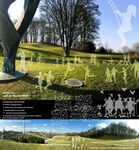
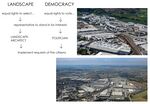


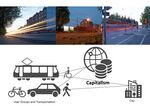






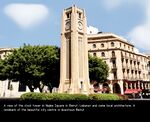











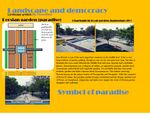
![The Azadi Tower (Borje Āzādi; "Freedom Tower"), formerly known as the Shahyad Tower (برج شهیاد Borje Ŝahyād; "Shah's Memorial Tower"), is a monument located at Azadi Square, in Tehran, Iran. It is one of the landmarks of Tehran, marking the west entrance to the city, and is part of the Azadi Cultural Complex, which also includes a museum underground. The tower is about 45 metres (148 ft) tall and is completely clad in cut marble.[1][2] It was commissioned by Mohammad Reza Pahlavi, the last Shah of Iran, to mark the 2,500th year of the foundation of the Imperial State of Iran](/images/thumb/a/a7/LED_landscape_symbol_kia_jpg3.jpg/150px-LED_landscape_symbol_kia_jpg3.jpg)




